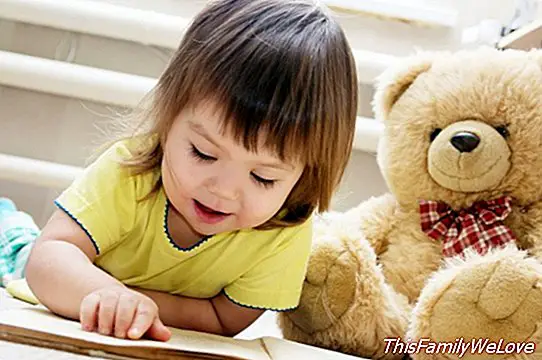Learning to read and write: the mystery of words

Reading fulfills important functions such as instructing, educating, entertaining, reviving the imagination, awakening the critical sense or developing the capacity for reasoning. The animation to reading is a set of activities that, little by little, facilitate the contact of children with books and allow the formation of good readers.
If we want our children to enter the world of reading and writing, we must give them books appropriate to their age, help them and listen to them when they tell us what they have read; that is, participate with them.
To start them in the taste for these techniques you have to select the topics that concern the child according to their age, their social environment or their interest as: fantasy, humor, sports or music. In general, it is important to initiate children in reading and writing with books that are attractive to the naked eye and with an accessible language.
What is reading and writing?
The linguistic sign is formed by:
- Concept: it is the idea that is presented to you when you read or hear a word; it is the meaning.
- Image: it is the material part of what you say or see; It is the signifier.
As we read, we follow the following process: first, we visually perceive a set of letters. Immediately afterwards we observe the deciphered sounds one by one. In a third moment, and as a final result, the linguistic sign is formed. The word is saturated with content.
When writing, something similar happens but in reverse: The linguistic sign is already formed: we have the concept and the representation of the voice. We analyze the signs of sounds one by one. At a last moment, the sounds are integrated into the written word. According to the above, reading and writing are two different processes that complement each other; They are two sides of the same coin. Hence the reading-writing.
Great interest in reading
The 6 to 8 year old child begins and progressively consolidates the literacy techniques. He feels a great interest in reading, he asks a lot about the posters he sees on the street; is interested in understanding and decipher any advertisement, poster or sign, which is within your reach.
We must take advantage of that desire to want to know. Start reading words and phrases, which you see in the stories. We must insist on the understanding of those words and phrases, asking him about what he has just read and if he has understood it. Little by little he will be catching reading speed, progressively. At 7 or 8 years old, he can read stories with a broader text, according to the reading process of each child.
At the same time as reading, and having worked a lot of fine motor skills and graphomotor skills, the child is already able to start writing words and phrases, with the correct directionality. It is important, in the face of good calligraphy, that you place these letters in a grid. He likes to copy meaningful words and phrases and make drawings about what he reads or writes. He is already able to invent phrases referring to an image. He also likes to be told words and later phrases. He wants to copy phrases or pieces from a story. You can write a letter or make a brief description, as well as short stories.
This is the key stage where reading and writing are strengthened, where the problems that affect the learning of these techniques come to light: dyslexia, perception, etc. An incorrect vision in the child can make him stagnate.
Children's literature
The playful aspect, of play, is the essential ingredient of a good children's literature. It is important to know that there is a type of book for each age; Thus, from 6 to 8 years, the text must be simple and well distributed, short and with dialogues, following the scheme: approach, development, node and outcome. The illustration is still a very important aspect. There is an interest in comics and wonderful and imaginary elements. From the age of 6 you enter the moment of passage from the handwritten letter to the letter.
Montse López Teacher of Infant Education of the Guadalaviar School




